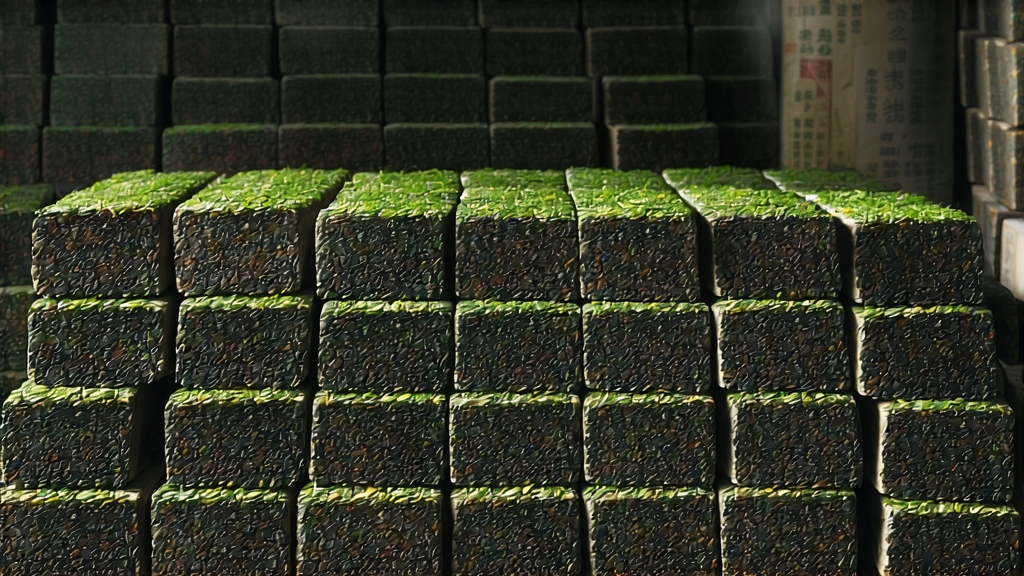
Tucked away in the southern folds of China’s Guangxi Zhuang Autonomous Region, Liu Bao tea has spent four centuries quietly fermenting its way into the hearts of Cantonese merchants, Malaysian tin miners, and modern tea aficionados alike. To the uninitiated, “dark tea” may sound like a generic category of opaque brews, yet Liu Bao whispers a singular story of humid mountains, river port trading, and microbial alchemy. This article invites international drinkers to discover why a single cup can taste of damp earth, dried longan, and the leather spines of antique books—all at once.
-
Historical footprints from the Tea-Horse Trail to the South China Sea
Liu Bao takes its name from the old Liu Bao township of Wuzhou, where the Liu River once bustled with bamboo rafts loaded tea bound for Guangzhou and Hong Kong. During the Qing dynasty, imperial edicts taxed “west river tea” heavily, so growers compressed the leaf into tight baskets to evade duties and withstand the long voyage downriver. The steamy hold of junks naturally induced a secondary fermentation; dockworkers noticed that the darker the leaf became, the smoother the liquor tasted. By the late 19th century, Liu Bao baskets were stacked in the holds of clipper ships crossing the South China Sea, satisfying the thirst of Overseas Chinese who believed the tea cut through the grease of coconut-laden diets and protected against malaria in the tropics. In 1886 the British colonial government of Malaya even listed Liu Bao as a strategic import, placing it alongside opium and rice in official ledgers. -
Terroir: where subtropical mist meets red soil
Guangxi’s low-latitude mountains trap monsoon clouds between granite outcrops, creating a year-round humidity above 80 %. The indigenous Camellia sinensis var. sinensis bushes cling to ferric laterite slopes at 300–800 m elevation. Cool nights slow leaf growth, concentrating polyphenols, while the iron-rich soil imparts a subtle mineral sweetness that later anchors the tea’s earthy profile. Farmers traditionally intercrop with cinnamon and star-anise trees; their roots share mycorrhizal networks, adding faint spice tones to the leaf chemistry. -
From basket to brick: the craft of wet piling
Unlike shou Pu-erh that borrowed its “wet piling” technique in the 1970s, Liu Bao has practiced controlled post-fermentation since at least the 1850s. After spring picking of one bud and three to four leaves, the leaf is briefly wilted, then wok-fired at 200 °C to arrest oxidation while preserving enzymes crucial for microbial aging. The hot leaf is immediately rolled for 40 minutes until rope-like strips exude a grassy aroma. Next comes the pivotal “dui zi” (piling) stage: leaves are heaped 70 cm high on bamboo mats, sprayed with mineral-rich mountain water, and covered with jute sacks. Internal temperature climbs to 55 °C within 36 hours; thermophilic molds Aspergillus niger and yeasts such as Blastobotrys adeninivorans bloom, breaking down bitter catechins into mellow theaflavins and aromatic furfurals. Every two days the pile is turned by barefoot workers who judge readiness by scent—sweet dates, then damp bark, finally a betel-nut spiciness. After 25–30 days the pile is spread out, sun-dried, and sorted. Traditional baskets woven from sugar-palm fiber are still filled with 50 kg of tea and steamed for three minutes to soften, then compressed by wooden lever presses. The basket’s belly is pierced with a bamboo pole, creating a central air channel that allows residual moisture to escape during the six-month boat ride to market, preventing sourness. -
Grades, shapes, and decades
Liu Bao is classified by leaf maturity and aging vessel. Top grade “Special Flag” uses pre-Qingming buds yielding a glossy russet liquor. “First Grade” contains more stem, adding a cane-sugar sweetness. Shapes range from 500 g palm-leaf bricks to 30 kg cylindrical “tea logs” wrapped in bamboo bark. Connoisseurs seek pre-1970 “Three-Year Boat Aged” baskets whose labels still bear export stamps of Hong Kong’s Woo Cheong Tea Co. A 1958 vintage can fetch USD 3,000 at Kuala Lumpur auction, prized for its camphor nose and jujube finish. -
Brewing the southern darkness
Gongfu style best showcases Liu